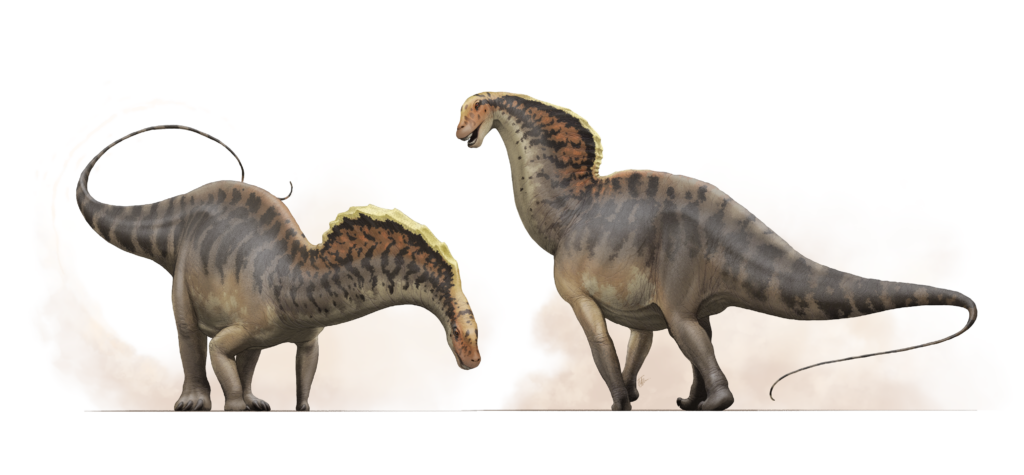Dinosaurs have long fascinated scientists and enthusiasts alike, not only for their sheer size and diversity but also for the unique adaptations that made them successful in their ancient habitats. While science continues to unearth new insights about these incredible animals, some theories propose that certain dinosaurs possessed extraordinary abilities that set them apart from their prehistoric peers. Let’s explore ten such dinosaurs whose theorized traits seem almost like superpowers!
Pterosaur’s Flight Mastery

The pterosaurs, while not technically dinosaurs, were flying reptiles that dominated the skies. These incredible creatures are believed to have had enormous wingspans, some measuring over 30 feet. Their bones were lightweight yet strong, enabling them to soar for long distances without using much energy. Scientists theorize that pterosaurs might have used thermal currents to glide effortlessly across continents, making them exceptional long-distance travelers of the prehistoric skies.
Armadillosaurus’ Armor Plating

Ankylosaurus, affectionately dubbed “armadillosaurus” due to its resemblance to contemporary armadillos, boasted formidable armor plating. This massive herbivore was covered in thick osteoderms, or bony plates, which provided excellent protection against predators. Its tail was equipped with a club-like structure, which it could swing with forceful precision, theorized to be capable of breaking the bones of any predator foolish enough to attack.
Tyrannosaurus Rex’s Super Bite

The king of dinosaurs, Tyrannosaurus rex, possessed one of the most powerful bites in the animal kingdom. Scientists estimate that its bite force could exceed 8,000 pounds, roughly equivalent to the weight of three small cars. This immense power allowed T. rex to crush bones with ease, giving it access to the nutritious marrow. This carnivore’s incredible dental arsenal assured its status at the top of the food chain.
Brontosaurus’ Neck Reach

Brontosaurus, known for its long and graceful neck, used this attribute for browsing vegetation high in the trees. Contrary to earlier beliefs of dragging its tail to support its weight, new theories suggest its neck served as a balance for its extended frontal reach. This adaptation made brontosaurus an excellent forager, able to access food sources that other herbivores couldn’t reach, ensuring its survival through diverse ecological conditions.
Velociraptor’s Agile Prowess

Velociraptor, although smaller than portrayed in popular media, possessed remarkable agility and speed. With a lightweight frame and strong, flexible legs, velociraptors could outrun many of their prey. Their curved, retractable claws were deadly weapons for slashing and grabbing, turning these predators into efficient hunters. This agility could be compared to the superpowers of endurance and speed in modern-day predators.
Stegosaurus’ Thermoregulation

The iconic Stegosaurus is recognized for the large, bony plates along its back. Beyond protection, these plates are theorized to have played a role in thermoregulation. Scientists speculate that the plates, filled with blood vessels, could dissipate heat when necessary or absorb sunlight to warm its body. This ability to regulate its temperature autonomously suggests stegosaurus had a superpower for climate adaptability.
Spinosaurus’ Aquatic Advantage

Spinosaurus was one of the largest carnivorous dinosaurs, and recent theories suggest it was semi-aquatic, making it an adept swimmer—an unusual trait for dinosaurs. With a sail-like structure along its back and webbed feet, this dinosaur likely spent much of its time hunting in water. This theory posits that Spinosaurus could pursue aquatic prey with ease, making it a formidable predator both on land and in water.
Parasaurolophus’ Sound Amplification

The Parasaurolophus is known for its distinctive elongated cranial crest. Some scientists propose this crest functioned as a resonance chamber, enabling the dinosaur to produce sounds to communicate across great distances. This ability could serve as an early warning system or a way to connect with herd members. In a landscape where communication was vital, such an acoustic superpower would have been invaluable.
Camarasaurus’ Efficient Digestion

Camarasaurus, a massive sauropod, had a highly efficient digestive system. It could consume a vast amount of vegetation quickly, making use of large quantities of gastroliths—swallowed stones—to grind plant material in its stomach. This adaptation allowed them to extract maximum nutrients from their diet, essentially turning them into giant plant-processing factories, a crucial trait for their sustenance.
Megaraptor’s Versatile Appendages

Unlike their smaller cousin, Megaraptors were armed with long, strong arms ending in unusually large claws. These appendages were likely used for grasping and holding prey tightly, suggesting they could exploit a wider range of prey compared to other theropods. Such versatility would certainly qualify as an evolutionary superpower, enhancing their predatory success.
In conclusion, the dinosaurs’ extraordinary abilities were a testament to the wonder of evolution and adaptation. These prehistoric titans, through their unique traits, dominated a world vastly different from our own. Each of these dinosaurs contributes a fascinating chapter to the story of life on Earth. These scientific theories not only fuel the imagination but also enrich our understanding of both ancient and current ecosystems, showing us just how diverse and capable life’s evolutionary paths can be.



